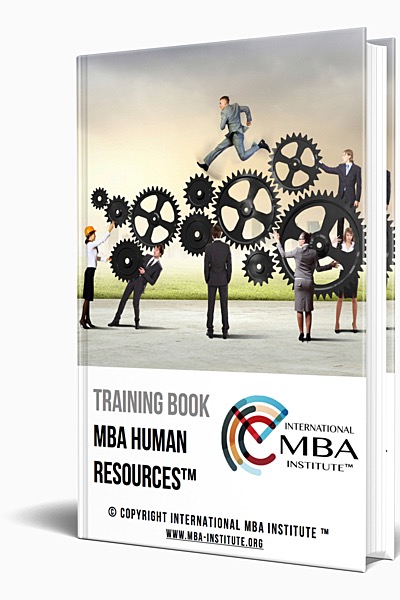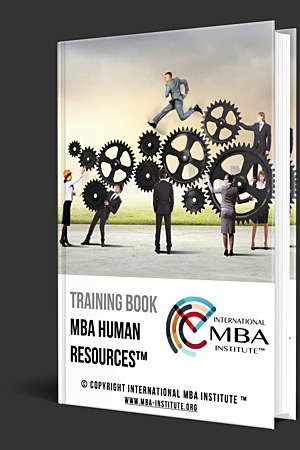Functions of Human Resources Management
In this chapter, you will:
- Understand your roles as a people manager
- Understand categories of HRM functions
As a manager, you must get things done through people. Individual goals and aspirations have to be in alignment with your organizational goals for the successful handling of a business. You should be able to utilize human and non-human resources to bring about this alignment and eventually achieve these goals. Handling of the human assets reflects your managerial capabilities. Managing people is one of the biggest challenges for you or any manager, for the following reasons:
- Individuals differ from each other in terms of their values, attitudes, beliefs and culture. This leads to a very complex situation in an organizational context.
- The stimulating and motivational factors might not be the same for all the employees. It is important to understand the individual needs of these employees and cater to these needs.
- The expectations of employees of today are much greater when compared to the employees of yesteryears. They know they are valuable assets and demand to be treated as such.
You must understand and accept the fact that individuals, and not organizations, create excellence. The famous American industrialist, John D Rockefeller once said, “I will pay more for the ability to deal with people than for any other ability under the sun”. This explains the importance of the human element in organizations. Underlining the significance of the human element in the production process, Peter F. Drucker says that “man, of all the resources available to man, can grow and develop.” However, there are still many unanswered questions about how to establish the right climate for enhancing employee motivation and commitment.
HRM functions can be broadly classified into two categories:
- Managerial functions
- Operative functions
Managerial Functions
Managerial functions of the human resource department are planning, organizing, staffing, directing and controlling. All these functions have an impact on the operative functions, as shown in the following figure.
Planning:
In planning you formulate the future courses of action. Planning includes determining in advance the personnel programs and changes required that would contribute to the achievement of organizational goals.
It also includes identifying human resource requirements and forecasting personnel needs foreseeing the changes in employee attitudes and evolving effective ways of handling these changes.
Organizing:
In organizing you establish an intentional structure of roles for people in an organization. Structural considerations such as the chain of command, division of labor, and assignment of responsibility are part of the organizing function. Careful organizing ensures effective use of human resources. According to J L Massie, an organization is a “structure and a process by which a cooperative group of human beings allocates its task among its members, identifies relationships and integrates its activities towards a common objectives”. The organizing function establishes relationships among employees so that they can contribute collectively towards the attainment of an organization’s goals.

Functions of Human Resources Management
Staffing:
In this process you obtain and maintain capable and competent personnel in various positions at all levels. It broadly encompasses manpower planning, recruitment, selection, placement, induction and orientation, transfer, career progression and separation.
Directing:
In this process you direct all the available resources towards the common organizational goals. Thus, direction is a vital management function which ensures maximum employee contribution and also helps in establishing sound industrial and human relations. It also involves coordination between different departments to ensure maximum utilization of all resources including human resources.
Controlling:
In control you measure and rectify activities to ensure that events conform to plan. This function measures performance against goals and plans identifies deviations and by placing the process back on track, helps in accomplishment of plans. Previous experiences and knowledge sharing help avoiding repetitive problems, reducing the need for controlling.
After planning, organizing, staffing and directing the various activities of HRM, you verify performance in order to ensure that the HRM functions comply with the plans and directions. Auditing training programs, analysing labour turnover record; directing morale surveys, and conducting exit interviews are different ways of controlling the HRM function.
Operative Functions
The operative functions of HRM are related to specific activities of HRM, viz., employment, development, compensation and employee relations. Since the human resource function is unique to each organization, the activities of the HR department differ from one organization to the other.
The various operative functions of HRM are discussed below:
Employment:
Employment is the first operative function of HRM. In this function, you procure and employ individuals with suitable knowledge, skills, experience and aptitude necessary to perform various jobs. You perform various sub-functions such as job analysis, human resource planning, recruitment, selection, placement, and induction.
Job Analysis – To ensure the satisfactory performance of an employee, you need to see that his skills, abilities and motives to perform a job must match the requirements of the job. A mismatch will result in poor performance, absenteeism, turnover and other problems. Job analysis is the process by which the tasks which comprise the jobs are determined and the skills and abilities required to perform it successfully are identified. It is the process of studying and collecting information pertaining to the operations and responsibilities of a specific job. In job analysis, you:
- Prepare job description, job specification, job requirements and employee specification so that the HR manager can determine the nature, levels and quantum of human resources required.
- Provide the guides, plans, and basis for job design and redesign. Job analysis also forms the basis for all operative junctions of HRM.
Human Resource Planning:
In human resource planning you forecast the human resource requirements of an organization and the future supply of human resources. You also make suitable adjustments between these two in correlation with organizational plans. You assess the possibility of developing the human resources to match the requirements, by introducing appropriate changes in the functions of HRM. Human resource planning assures an organization of suitable and adequate manpower to perform various jobs in accordance with the organizational goals. In human resource planning, you:
- Estimate the present and future manpower requirements on the basis of long range plans and organizational objectives.
- Estimate the net human resource requirements on the basis of the present inventory of human resources, and take into account retirements, transfers, attrition etc.
- Take measures to mould, change and develop the existing employees to enable them meet the future organizational requirements.
- Develop action plans to attract and acquire valuable human resources from the market.
Recruitment:
To a large extent, the effectiveness of an organization depends on the effectiveness of its employees. Hence, recruitment of human resources becomes a significant HR function. Recruitment is the process where you seek and attract prospective candidates against a vacancy in an organization. In recruitment, you:
- Tap the existing sources of applicants and develop new sources;
- Identify or create new sources of applicants;
- Stimulate and attract the candidates to apply for jobs in the organization;
- Decide the recruitment procedure.
Selection:
The purpose of employment selection is to choose the right candidate for a job. The process in which you identify and establish the credentials of a candidate for a job to ensure success is referred to as selection. In this function, you:
- Scan the applications forms / CVs;
- Identify and develop suitable and reliable testing techniques;
- Involve the line managers or respective departments;
- Evaluate the candidates and fixing their salary and benefits;
- Formulate medical fitness policy and examination procedures;
- Intimate the candidates, even the ones who are not selected, about the results of the selection process;
- Employ the selected candidates.
Placement:
After a selected candidate conveys his acceptance of the offer of employment made by an organization, his placement has to be decided based on the needs of the organization. The individual’s needs also have to be given due consideration where possible. In this function, you:
- Discuss the placement with the line/functional managers and identify a mentor for the new entrant.
- Conduct follow-up study and evaluate employee performance so as to determine how well the employer has adjusted to the job.
- Identify mistakes in placements and correct them.
Human resources development
Human Resource Development (HRD) is the process in which you train and develop employees to improve and update their knowledge and skills, so as to help them perform their jobs better. The process also includes developing their attitudes, beliefs and values to match the organizational needs. HRD has to be a continuous process and should take into consideration both the present and future organizational requirements. HRD includes performance appraisal, training, management development and career planning and development.
Performance appraisal – In this process, you evaluate the performance of an employee on the job and develop a plan for improvement. This includes an assessment of the strengths and weaknesses of the employee, and drawing up a development plan in consultation with him to prepare him for future tasks and responsibilities in the organization. Performance appraisal includes:
- Designing a performance appraisal system that suits the organizational needs and culture;
- Developing suitable methods to ensure that the system works successfully;
- Training all the employees in conducting appraisals;
- Implementing the system effectively and maintaining records;
- Obtaining feedback on its effectiveness and making timely and necessary changes.
Training:
In this process, you systematically develop knowledge, skills and attitudes required to perform a given task or job successfully, in an individual. It includes:
- Identifying the training needs of the individuals, keeping in view the organizational needs.
- Designing suitable training programs to eliminate the gaps in knowledge, skill or attitude.
- Conducting training programs, or providing support to other departments in conducting training.
- Evaluating the effectiveness of the training programs and making necessary changes.
Management Development:
In management development, you develop the employees of an organization to meet future changes and challenges. It includes forecasting the human resource demands of an organization and gearing up to meet these demands. Management development looks at enabling an employee to develop his overall personality and his capability for continuous improvement. It is different from training, where the employee is taught a set of specific skills or imparted knowledge on a particular subject.
Career Planning and Development:
In career planning, you identify one’s career goals and formulate plans of reaching them through various means like education, work experience etc. Career development looks at individuals’ goals from the point of view of the organization, where as career planning looks at the same from the individual’s view point. Hence it is important that career planning and career development reinforce each other.
Compensation
Compensation includes all the extrinsic rewards that an employee receives during and after the course of his job, for his contributions to the organization. The principles of compensation payment are that it has to be adequate, equitable and fair to the employees. Compensation encompasses base salary, incentives, bonus and benefits and is based on job evaluation.
Job evaluation: In job evaluation, you systematically determine the value of each job in relation to other jobs in the organization, in the industry and in the market. In other words, job evaluation involves classifying a job based on its importance and its contribution to the organization and its requirements. It involves
- Identifying/designing suitable job evaluation techniques;
- Evaluating various jobs;
- Ascertaining the relative worth of jobs in various categories.
Wage and salary administration:
In this process, you formulate and operate a suitable wage and salary program. It includes:
- Conducting wage and salary survey in the market and in the industry;
- Determining wage and salary rates on the basis of various factors like law, equity, fairness and performance;
- Implementing wage and salary administration programs;
- Evaluating the effectiveness of these programs.
Incentives:
Incentives are the rewards an employee earns in addition to regular wages or salary based on the performance of the individual, the team or the organization.
Bonus:
Bonus is primarily a share in the surplus or bounty and is directly related to the organization’s performance.
Fringe benefits:
Fringe benefits are those monetary and non-monetary benefits given to employees during their employment, and sometimes, in the post-employment period also. These benefits are connected to employment with the organization and are not related to the employee’s performance. These benefits provide a sense of security to the employee and keep them committed to the organization. Some of the fringe include:
- Disablement benefits
- Housing facilities
- Canteen facilities
- Conveyance facilities
- Educational facilities for employees and their children
- Credit facilities
- Recreational facilities
- Medical and welfare facilities
- Post-retirement benefits
- Company stores
- Legal aid.
Employee relations
In employee relations, you deal with the employees in the organizational context, as a social group that contributes to the organization. It includes:
- Increasing employee productivity;
- Keeping the employees satisfied and motivated; Developing team building, team management and leadership skills in employees;
- Designing and implementing a fast and suitable grievance management system;
- Ensuring discipline among the employees by prompt action to correct deviations;
- Supporting employees by counselling and developing them into complete individuals and responsible citizens;
- Enhancing the quality of work-life and personal life of the employees.
The relationship between an employee and his manager plays a critical role in determining the job satisfaction level of the employee. Ideally, an average employee desires his manager to possess the following characteristics:
- Be genuinely interested in the employee and his work;
- Lend support and guidance whenever required;
- Bring in clarity in terms of the of responsibilities and tasks;
- Identify the strengths and suggest how to build on them;
- Identify the weaknesses of the employee and encourage him to overcome them;
- Take a personal interest in the employee and his problem;
- Be willing to listen and accept concrete and valuable ideas;
- Reward the employee for his contributions;
- Have faith and confidence in the abilities of the employee;
- Be frank and open in his dealings with the employees as well as the organization.
Summary:
- Managerial Function includes:
- Planning
- Organizing
- Staffing
- Directing
- Controlling
- Operative Function includes:
-
Employment
- Job Analysis
- Human Resource Planning
- Recruitment
- Selection
- Placement
- Induction
-
Human resources development
- Performance appraisal
- Training
- Management Development
- Career Planning and Development
-
Compensation
- Job Evaluation
- Wage and Salary Administration
- Incentives
- Bonus
- Fringe Benefits
- Employee Relations
 MBA INSTITUTE™
MBA INSTITUTE™

















